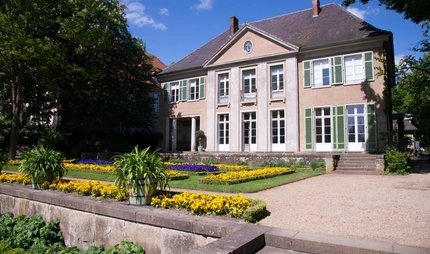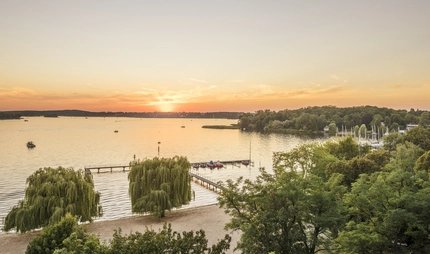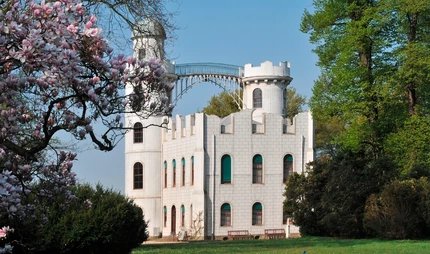
House of the Wannsee Conference
How the Holocaust was planned
The mansion at Großen Wannsee 56-58 was the location for a conference with earth-shattering consequences. In 1942, leading figures in the Nazi government and SS meet here to discuss their so-called Final Solution to the Jewish Question. The exhibition in the House of the Wannsee Conference gives an insight into this criminal meeting, and how the plan was put into practice. It details the genocide perpetrated on the European Jews through the use of original documents and audiovisual presentations.
Revisit Germany's darkest times in glamorous rooms
In 1914, pharmaceutical manufacturer Ernst Marlier builds his new luxury villa, and a few years later anti-Republican and right wing industrialist Friedrich Minoux takes ownership of it. He sells the villa to an SS foundation in 1941 for use as a guest house. The following year, National Socialists are already planning the Wannsee Conference. After the Second World War, the villa is handed over to the political party SPD who establish an educational centre called the August-Bebel-Institute. It serves as a school between 1952 and 1982. In 1982, Richard von Weizsäcker, Berlin's mayor, designates the house a memorial, and since 1992, on the 50th anniversary of the Wannsee Conference, it becomes an official museum and educational centre.
The first impression of the mansion is deceptive; the House of the Wannsee Conference is like any other provincial country estate – a magnificent mansion built in the Italian country house style. Inside, the rooms are well-lit and elegant, giving no hint of the events which happened here. The first exhibition room gives information about the people who attended the conference, along with documents about anti-semitism and racism in the 1920s. Go through the hall to see items of Third Reich propaganda such as posters and leaflets. Further three rooms are devoted to the collaboration with the Nazi leaders, along with archive material from Eastern Europe which has only been on public display since the 1990s.
Important things to see in the exhibition
- Original documents from the Wannsee Conference and information about the participants.
- Audiovisual presentations about the history of Jewish persecution.
- Photos and books about Jewish ghettos, their function and everyday life there.
- Detailed information about deportation and extermination of Jews.
- Multimedia centre for the study of National Socialism.
Sights at Wannsee
Just 400m from the mansion is the Liebermann Villa where artist Max Liebermann started painting at the beginning of the 20th century. See many of his 200 paintings in his original studio upstairs in the villa. The exhibition also focuses on the fate of Liebermann and his family, including his wife Martha who committed suicide in 1943 to escape Nazi persecution.
A walk through the Düppel Forest brings you to a jetty on Lake Wannsee from where you can catch a ferry to Pfaueninsel (Peacock Island) on the river Havel. In the 1820s, landscape architect Peter Joseph Lenné creates an English-style country park for the Prussian royal family. Named after the peacocks which roam free on the island, the park is a fine example of this style of German architecture. Friedrich Wilhelm II's castle, built in the late 18th century, is also on the site – open for visits from April to October.
Our tips for your visit
Take the S-Bahn S1 or S7 to Wannsee, and then bus 114 from the station to the House of the Wannsee Conference. Entrance to the exhibition is free. Adults pay extra for seminars, but students and young people go free. There are public guided tours free of charge at weekends.
Opening hours
| Monday | |
|---|---|
| Tuesday | |
| Wednesday | |
| Thursday | |
| Friday | |
| Saturday | |
| Sunday |
| Mon-Sun | 10a.m.-6p.m. |



